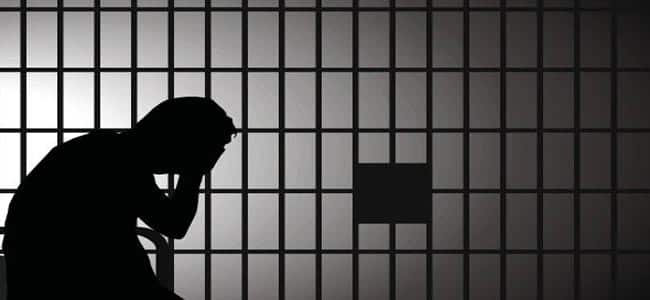An estimated 1.8 million incarcerated people in the United States have been recently exposed to a dangerous combination of heat and humidity, and on average experience 100 days of these conditions each year—many of them in the 44 states that do not provide universal air conditioning to inmates. Tracking with climate change, in recent decades, the number of dangerous humid heat days in carceral facilities has increased, with those in the south experiencing the most rapid warming.
The findings are reported this week in the journal Nature Sustainability. In most cases prisoners’ exposure to extreme heat occurs in Southern states that do not mandate air conditioning in jails and prisons. The authors say the dangerous heat has been ignored by politicians and others who view the physical suffering as justified.
Additional findings:
- More than half of all dangerous heat and humidity exposures in the U.S. took place in Florida and Texas. The estimated 145,240 people in Texas and 98,941 in Florida housed in state-run carceral facilities in 2018 — together 12 percent of all incarcerated people in the U.S.—accounted for 52 percent of exposure (28 percent in TX, 24 percent in FL).
- The worst facilities experienced dangerous heat and humidity between one-fifth and one-third of the year. An estimated 118 carceral facilities — largely in southern California, Arizona, Texas, and inland Florida — experienced on average 75 days or more per year of dangerous humid heat. The Starr County Jail in Rio Grande Texas that incarcerated an estimated 249 people in 2018 experienced the largest number of dangerous humid heat days on average during 2016 to 2020: 126.2 days per year.
- Areas with jails and prisons experienced 5.5 more dangerous humid heat days annually compared to other locations without carceral facilities. Carceral facilities in Arizona experienced 13.1 more days per year than the rest of the state and 40.9 more days compared to the entire continental U.S. during 1982-2020, on average. Carceral facilities are often built in areas with greater heat and humidity.
- Nearly a million incarcerated people are housed in facilities seeing an increase in dangerous humidity and heat. An estimated 915,627 people in the U.S. — 45 percent of the estimated total incarcerated population — were housed in 1,739 carceral facilities with an annual increase in the number of dangerous days. Carceral facilities in Florida experienced on-average 22.1 more days in 2020 compared to 1982, the greatest increase in dangerous humid heat days for all continental states.
Incarcerated people are disproportionately susceptible to dangerous humid heat given preexisting health conditions. In fact, 43 percent of the state prison population has a previous mental health diagnosis, and people on psychotropic medications are at increased risk for heat illness.
Dangerous days were those where the indoor wet bulb globe temperature — a measure of humid-heat stress — exceeded 82.4 degrees Fahrenheit (28°C) — the threshold used by the U.S. National Institute for Occupational Safety and Health to limit humid heat exposure under moderate workloads.
Includes material provided by the Columbia University Mailman School of Public Health



